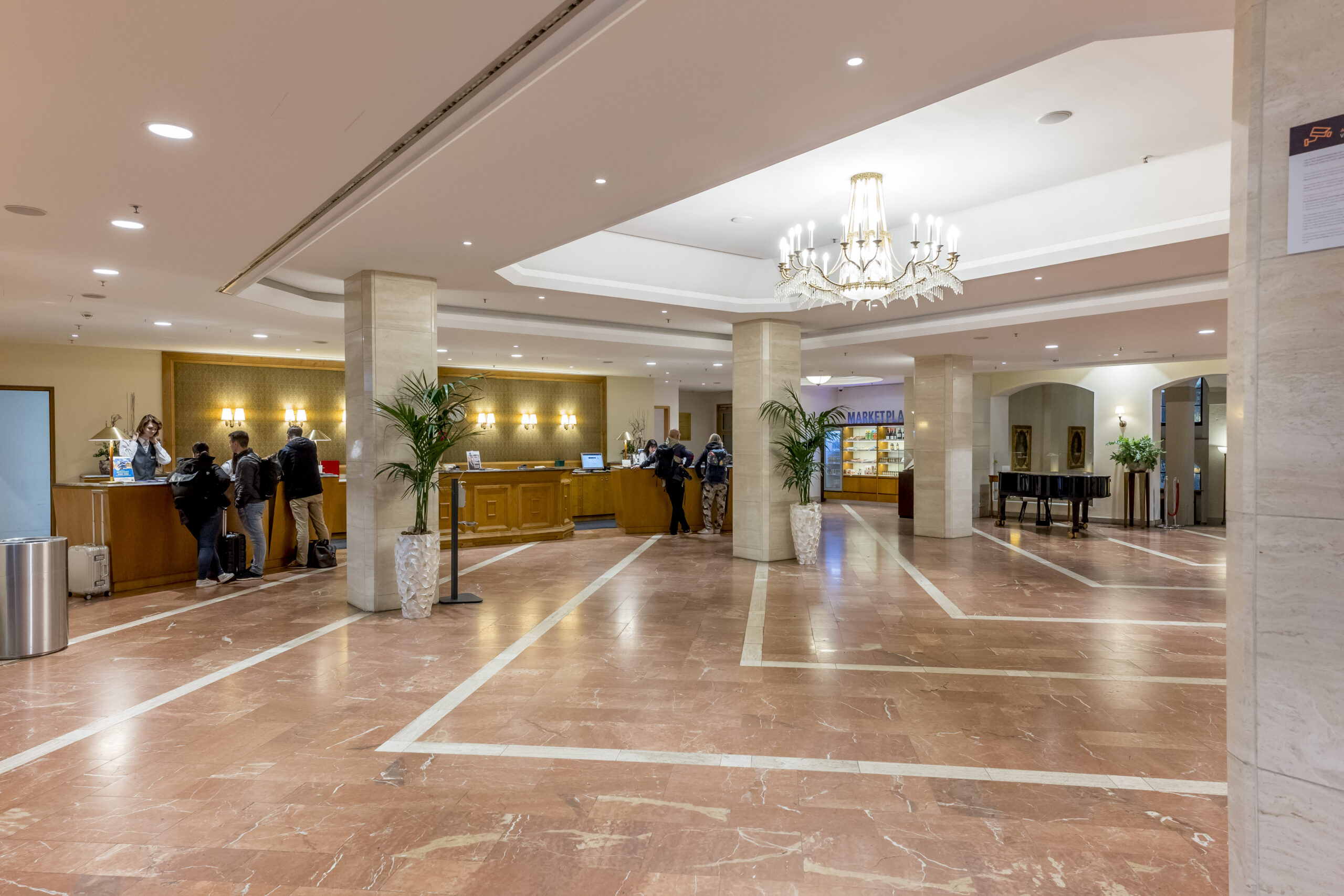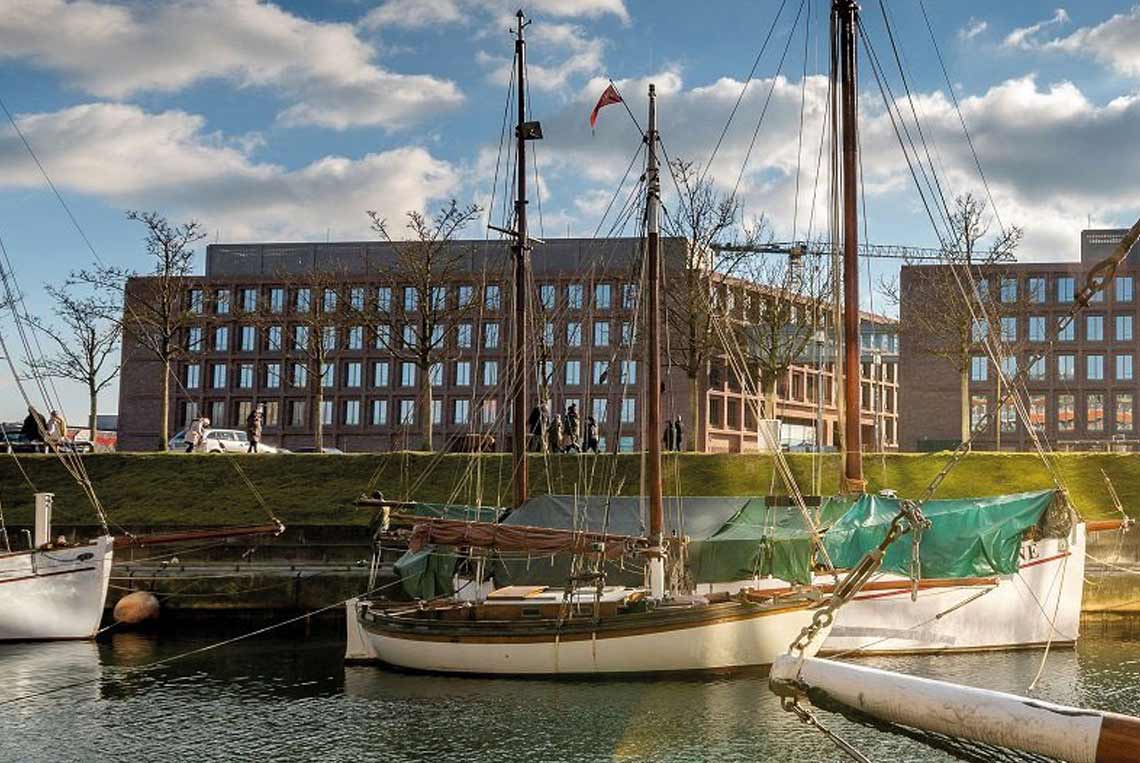60 percent less energy in Club Med
Issue 01-2016:
read all articles online
read as pdf
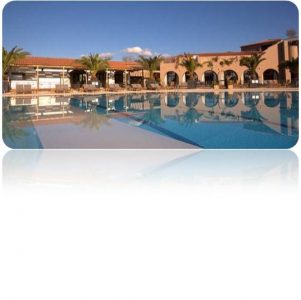 The hotel chain Club Med wanted to achieve energy savings in an economical way. In 2014, it tested an EnOcean-based automation system in some rooms, which controls heating and cooling in accordance with guest occupancy. The savings achieved after one year were significant. Therefore, the system will now be rolled out to complete hotels of the chain.
The hotel chain Club Med wanted to achieve energy savings in an economical way. In 2014, it tested an EnOcean-based automation system in some rooms, which controls heating and cooling in accordance with guest occupancy. The savings achieved after one year were significant. Therefore, the system will now be rolled out to complete hotels of the chain.
Club Med hotels are very popular around the world and have a high rate of guest bookings. Starting in 2012, the hotel chain was looking for energy saving measures, which have a return on investment (ROI) of less than three years, don’t require high maintenance effort and don’t disturb the guests’ comfort. Due to these specific requirements, the hotel decided on a test automation system based on energy harvesting wireless technology. ALTECON together with Vitec installed the solution in some rooms in Club Med Opio, France, and Club Med Kamarina in Italy.
In Opio, the EnOcean-based wireless room control solution is composed of a window and a door sensor, a motion sensor, a double relay, a fan coil controller, a wired thermostat and an EnOcean/WiFi gateway for central control. The components in Kamarina are similar but include a split controller instead of the fan coil controller and a remote control but no thermostat.
Control for all cases
Whenever the guest is in the room, he can always control the climate unit through an app on a smart phone to achieve a comfortable temperature. In all other cases, the heating and cooling is controlled automatically. The automation system controls the air-conditioning, and reduces it, for example, when the window contact detects an open window or the motion sensor detects the guest’s absence. Via the WiFi connection, the hotel staff has central access to the system via smart phone and can start the air conditioning in the room on time for the guest’s arrival. If a room is not occupied, the air conditioning can be switched off centrally as well.
Seasonal set-points
The automated control also considers seasonal differences. In winter, when the guest leaves the room, the temperature setpoint changes in three steps after a programmed time. When the guest is back, the temperature setpoint returns to the original value. In summer, the temperature setpoint change has the same logic but at an increased setpoint value.
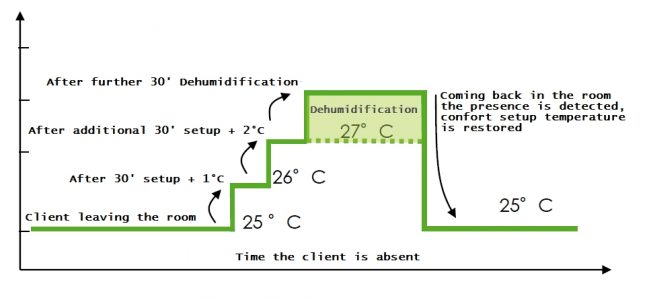
Seasonal temperature set-points in summer
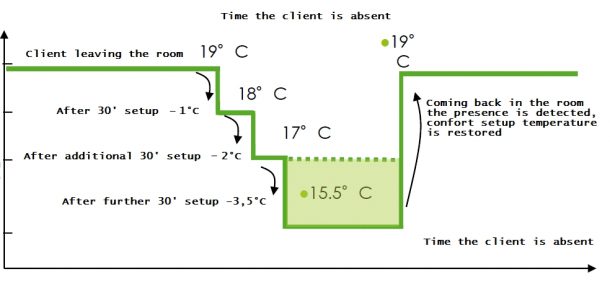
Seasonal temperature set-points in winter
60 percent savings at a two year ROI
The first tests showed a ROI of about two years with an installation effort of 1.5 to 2.5 hours per room. Thanks to the wireless technology, no reconstruction was required, meaning that the guests were not disturbed by noise or dirt during the installation. In addition, the hotel staff doesn’t need to maintain the components as all sensors and the remote control are energy harvesting and work without batteries.
Based on the positive test results, Club Med decided to expand the system and to have it installed in 50 rooms in Opio, 100 rooms in Kamarina and 39 rooms in Club Med Gregolimano, Greece. After one year, the ROI was confirmed at a little bit more than two years. The energy savings of 60% were so impressive that now all 800 rooms in Kamarina will be equipped with the EnOcean-based solution; other Club Med hotels will follow.
New articles in Smart Building
Top articles


